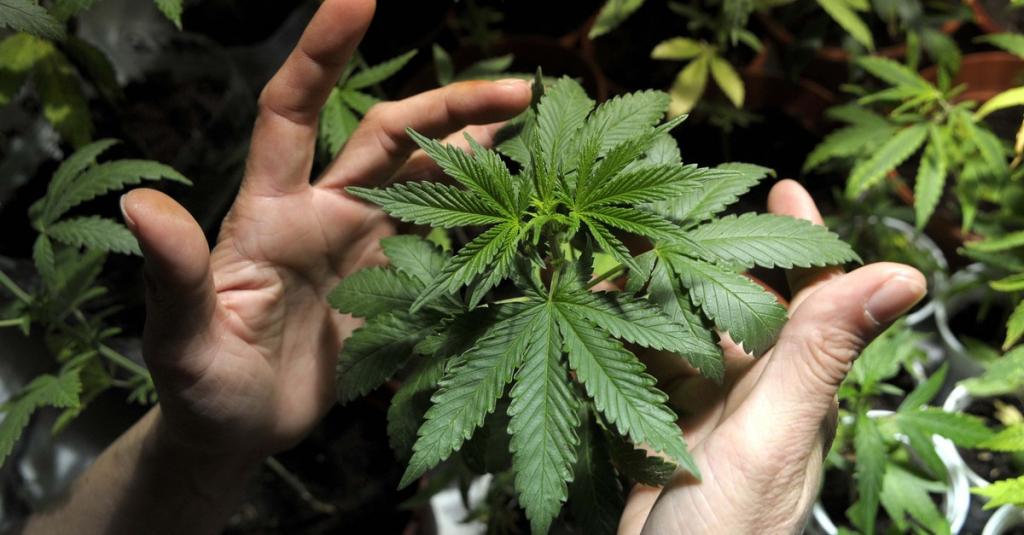** We Are Now Accepting All Major Credit Cards for an additional 10% that includes states sales tax and 3.75% Credit Card Fee **
Sativa, Indica, and Hybrid: What’s the Difference Between Cannabis Types?
The first thing you’ll notice while browsing the Leafly database is likely to be a trio of distinct colors that sort strains into three categories: sativa, indica, and hybrid. A new cannabis consumer may not know what these are, and sometimes even veterans don’t fully understand what these categories mean.
These terms have been around longer than you might think: early taxonomic distinctions between Cannabis indica and Cannabis sativa began in the 18th century when differences between their structure and resin production were first noted. The hybrid category was adopted later on, as growers began mixing genetics from different geographic locations. Indicas are believed to have originated in the Hindu Kush region near Afghanistan, where they developed thick coats of resin as protection against the harsh climate and conditions. Sativas thrive in temperate areas closer to the equator amidst more variable weather patterns.
Today, people generally ascribe more meaning to these categories than when indicas and sativas were originally categorized. These distinguishing characteristics include morphology, effects, flowering time, yields, geographical origins, and even flavors. This system has become so engrained in cannabis culture that many people will base their purchases on a strain’s classification alone.
We tend to think of indica strains as being more sedating and relaxing, with full-body effects that "lock" you to the couch (meaning you're content to sit back, unwind, and enjoy a Netflix marathon of your favorite show). On the other hand, we anticipate with sativas racier cerebral effects that leave us feeling energized and uplifted. Because of this typal contrast, consumers tend to prefer indicas for nighttime use while sativas are typically used from morning to afternoon.
Indica and sativa strains both have medical utility, but because of their perceived differences, they are often selected for different symptom management; for example, indicas are generally looked to for insomnia and pain, whereas sativas might be chosen for depression and fatigue. As varying combinations of the two, hybrids are often thought of as a “balance” of effects, offering a little bit of what both have to offer.
But to what extent do these classifications hold true? Ask almost any cannabis connoisseur to compare the indica Bubba Kush to a Sour Diesel sativa, and most will say there is a definite difference in effect. Take a look at how thousands of Leafly visitors have described the two:
Our expectations certainly play a role in how we experience any given strain, but this consistency is not insignificant. However, these expectations are sometimes overgeneralized. Two types of cannabis compounds – cannabinoids and terpenes – hold most of the influence when it comes to effects. Cannabinoids like THC and CBD are molecular structures with their own unique properties and medical benefits. Terpenes are the aromatic oils secreted in cannabis resin that modulate the effects of cannabinoids, and these too have their own set of effects. In this way, cannabis strains are the sum of smaller parts that may be passed on genetically. This helps explain the undeniable consistency in strain types, but there is still room for variation.
Let’s take the sativa-dominant hybrid Blue Dream as an example. Blue Dream descends from a line of sativas and indica-leaning hybrids, so you might expect to feel uplifted and energized due to its mostly sativa composition. Sometimes, however, you’ll find a more indica-like phenotype, or a strain that expresses characteristics we associate with indicas, such as a shorter flowering time and bushier plants. How the plant is grown can also affect the strain’s terpene and cannabinoid contents, and more or less of either compound type may give rise to different physical sensations.
As more research is conducted, our understanding of cannabis classification is bound to change and develop. We believe that this categorization still holds a great deal of importance, especially as breeders chase genetic lineages back to those earliest indica and sativa varieties.
WEEKLY NEWSLETTERS




.png)


